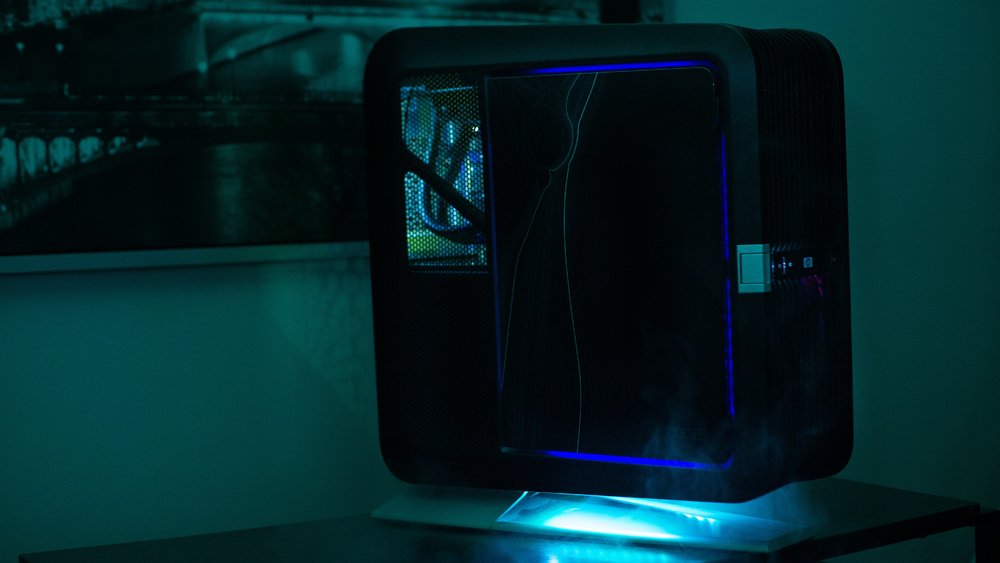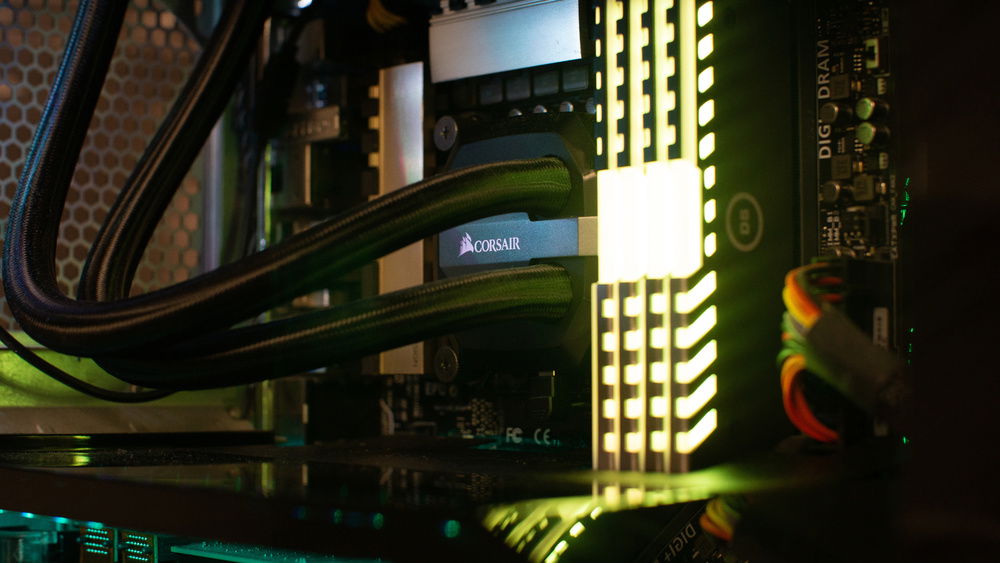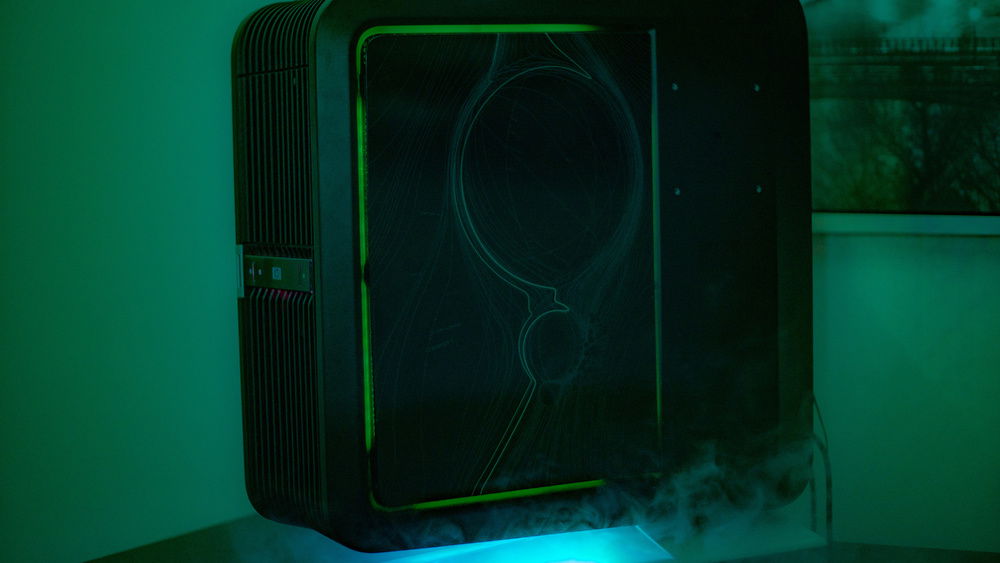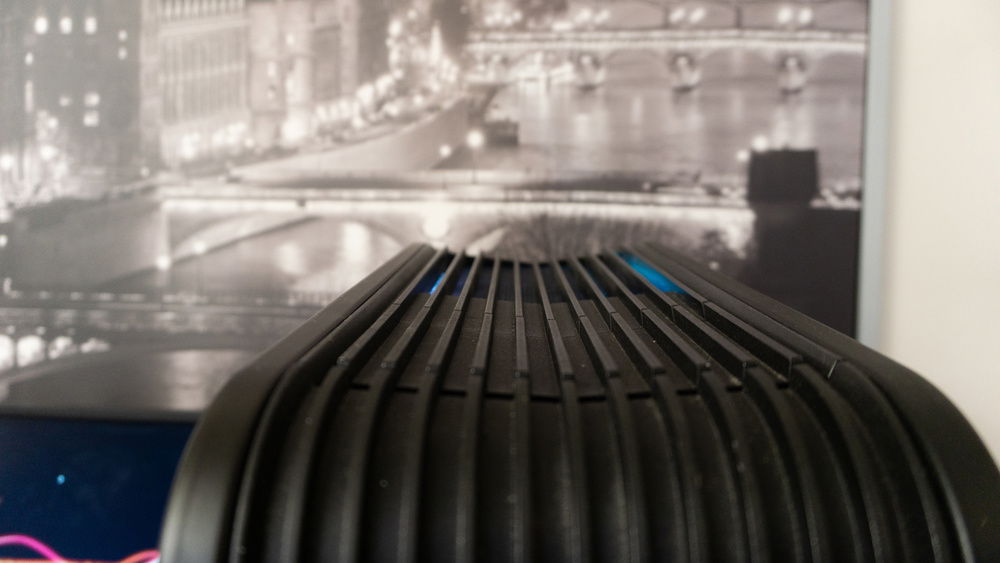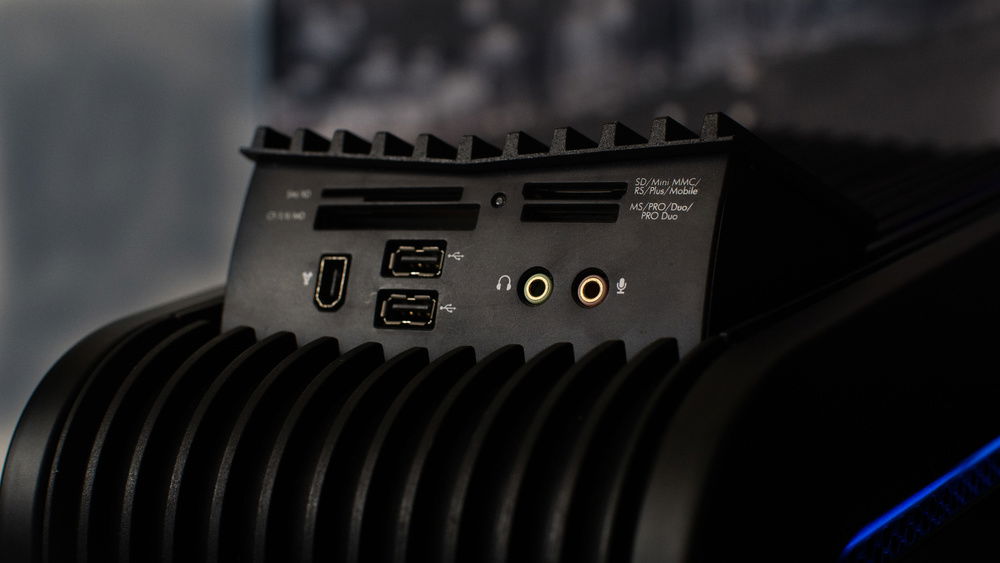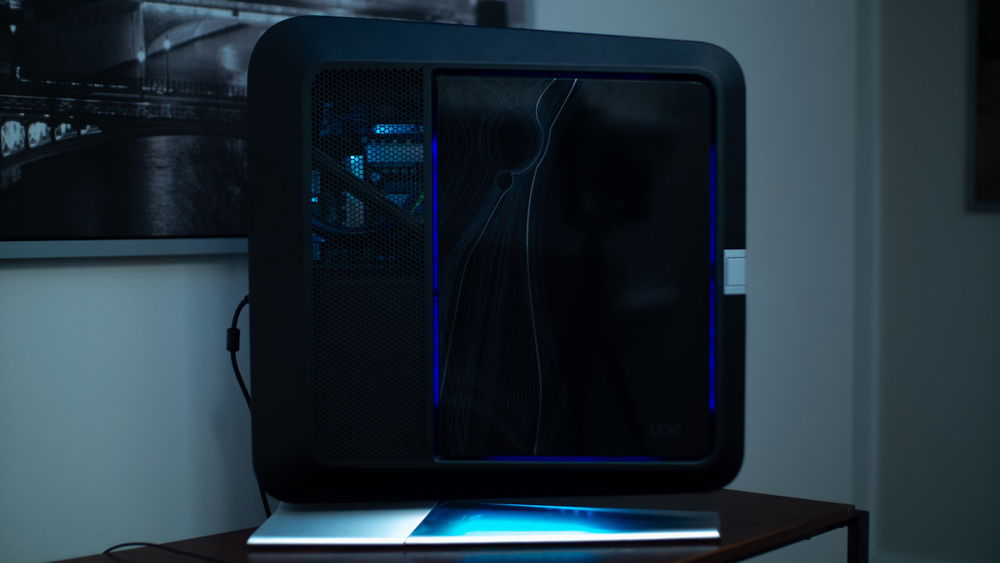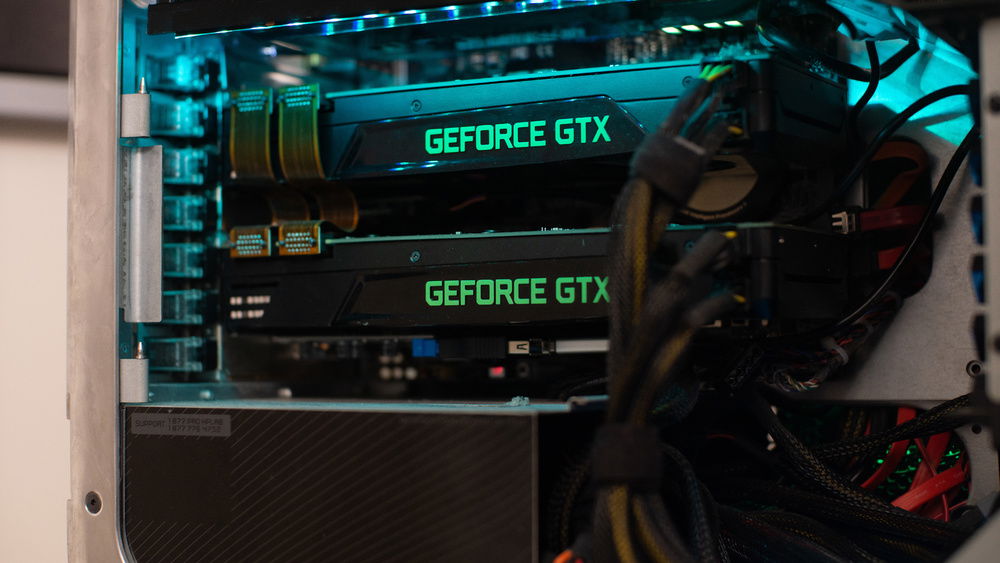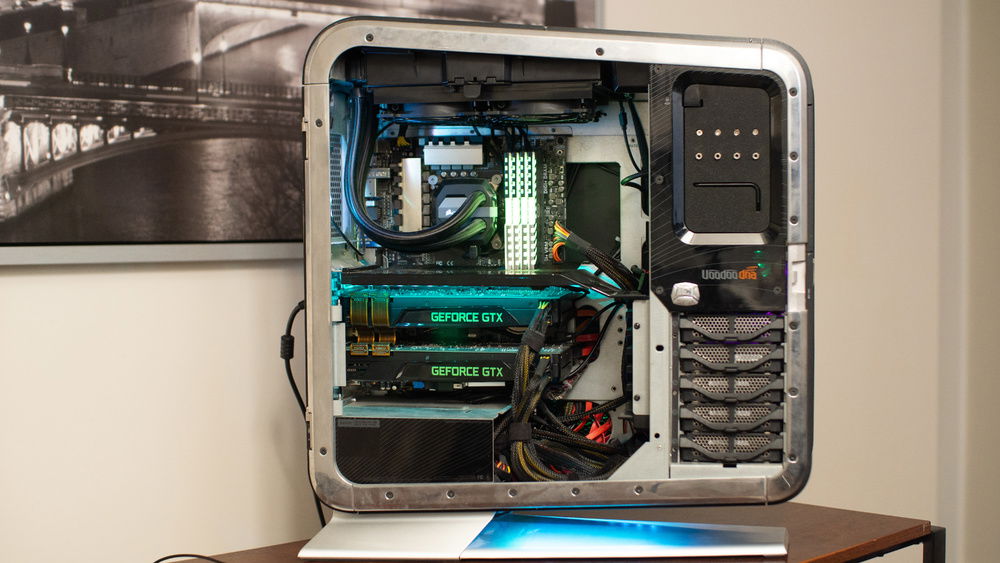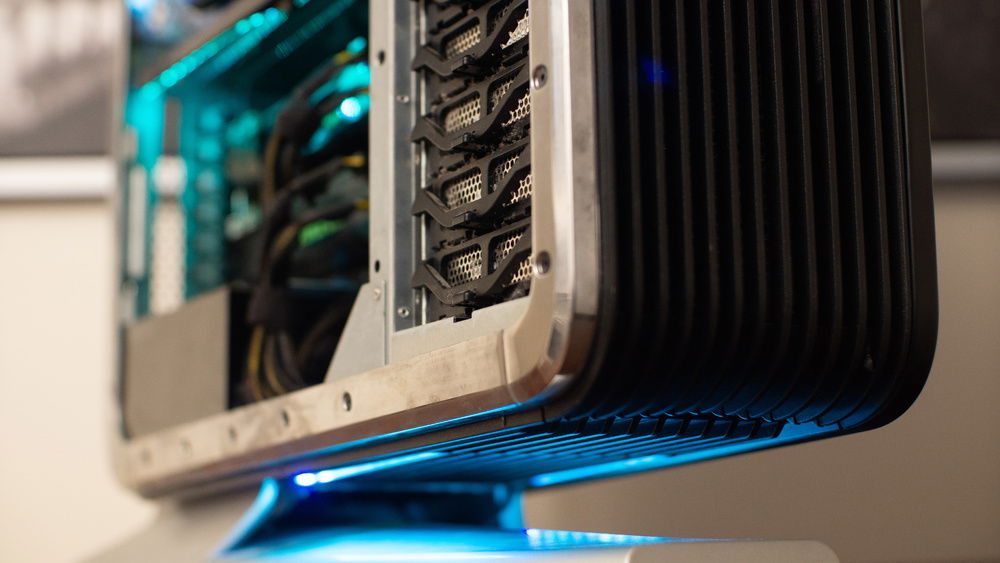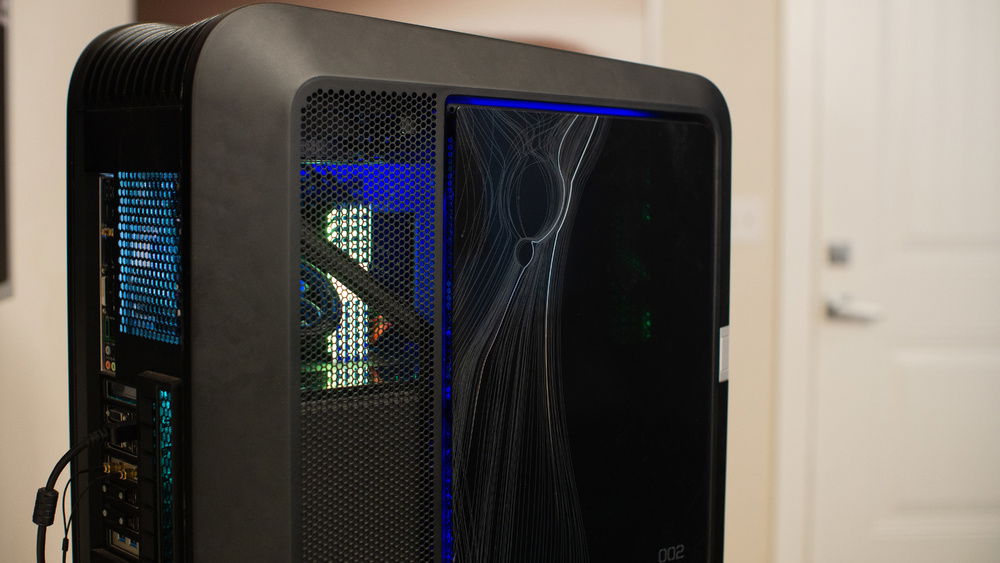Balling on A Budget DMX 512 RGB Control
**Skip to below if only interested in lighting.
This is system is an ode to what can be done when you are willing to put in a little bit of effort. I love the ultra high end systems that I see on this site but the price tags attached to the components makes PC building seem like a rich mans game. My goal was to see what kind of system I could build for a reasonable price. But I also wanted the PC to have a cool factor.
To do this I sourced primarily used parts. The only new parts on the system are the AIO Cooler, the SSD, the front-bay USB 3.0 hub, and any of the components used for lighting (more on this later).
My friend sold me his old 4770k on a Asus Z97- Pro Motherboard and 16 Gb of DDR3 RAM. I was able to Work out a deal where someone traded me their old GTX 680's in exchange for upgrading their system. The rest of the main components such as Hard drives and PSU came from my old tower. The case, HP Backbird 002, I chose was given to me by my older brother when I was in middle school (I am now 23). It was the case from a complete system made as collaboration between HP and Voodoo in 2007. He gave it to me and it was then that I was determined to one day build a system in it.
THE CASE
The HP Blackbird 002 is an absolute behemoth. There is almost no plastic on this system. The ribbed exterior and the majority of the frame and stand is made of cast aluminum. The whole case is cantilevered but don't think that means it is flimsy. Even though it is only supported at the back of the frame it was tested to support over 400 lbs. This is not the case that you want if you are going to LAN parties or really anywhere as empty, it weighs 35 lbs!
Other features:
THE LIGHTING
For this generation of CPU there were really no controllable lighting options. Newer motherboards often have led headers for systems like AURA SYNC but that was not an option for an older CPU. I decided to look into alternative options. I had some experience with DJ and stage lighting so I decided to look into DMX 512 lighting options. I came upon a decoding unit that was able to drive 8 different LED strips on different channels. To control this with a computer I needed a USB DMX 512 Controller. It is easy to spend hundreds of dollars on one of these devices but I went with a very generic one that came with free software. This was then connected to an internal USB PCI card. Links to all parts below:
Features:
DMX 512 Controling
Almost Infinite Control Over Lighting (This control method is usually for massive stages)
8 Individual Lighting Regions
React to Game Sound and Music
Custom Soldered LED headers.
This is system is an ode to what can be done when you are willing to put in a little bit of effort. I love the ultra high end systems that I see on this site but the price tags attached to the components makes PC building seem like a rich mans game. My goal was to see what kind of system I could build for a reasonable price. But I also wanted the PC to have a cool factor.
To do this I sourced primarily used parts. The only new parts on the system are the AIO Cooler, the SSD, the front-bay USB 3.0 hub, and any of the components used for lighting (more on this later).
My friend sold me his old 4770k on a Asus Z97- Pro Motherboard and 16 Gb of DDR3 RAM. I was able to Work out a deal where someone traded me their old GTX 680's in exchange for upgrading their system. The rest of the main components such as Hard drives and PSU came from my old tower. The case, HP Backbird 002, I chose was given to me by my older brother when I was in middle school (I am now 23). It was the case from a complete system made as collaboration between HP and Voodoo in 2007. He gave it to me and it was then that I was determined to one day build a system in it.
THE CASE
The HP Blackbird 002 is an absolute behemoth. There is almost no plastic on this system. The ribbed exterior and the majority of the frame and stand is made of cast aluminum. The whole case is cantilevered but don't think that means it is flimsy. Even though it is only supported at the back of the frame it was tested to support over 400 lbs. This is not the case that you want if you are going to LAN parties or really anywhere as empty, it weighs 35 lbs!
Other features:
- Slot Loading CD Drive
- Fast Swap Hard Drive Bays
- Hiding Front IO
- Tool-less Expansion Card Support Hardware
- White LED's on top and stand.
- High Volume Fans
- Separate expansion card bay
THE LIGHTING
For this generation of CPU there were really no controllable lighting options. Newer motherboards often have led headers for systems like AURA SYNC but that was not an option for an older CPU. I decided to look into alternative options. I had some experience with DJ and stage lighting so I decided to look into DMX 512 lighting options. I came upon a decoding unit that was able to drive 8 different LED strips on different channels. To control this with a computer I needed a USB DMX 512 Controller. It is easy to spend hundreds of dollars on one of these devices but I went with a very generic one that came with free software. This was then connected to an internal USB PCI card. Links to all parts below:
Features:
DMX 512 Controling
Almost Infinite Control Over Lighting (This control method is usually for massive stages)
8 Individual Lighting Regions
React to Game Sound and Music
Custom Soldered LED headers.
Color(s): Black Silver
RGB Lighting? Yes
Theme: Futuristic
Cooling: AIO Cooling
Size: ATX
Type: General Build
Contests
This build participated in 1 contest.
| Rank | Contest | Date |
|---|---|---|
| #600 | The builds.gg Stock Cooling Showdown - AIO Cooling Division | ended |
Hardware
CPU
$ 131.25
Motherboard
$ 155.00
Graphics
Storage
$ 115.17
Storage
$ 57.09
Case
Cooling
$ 108.00
Accessories
$ 34.99
Accessories
$ 78.02
Mouse
Approved by:
